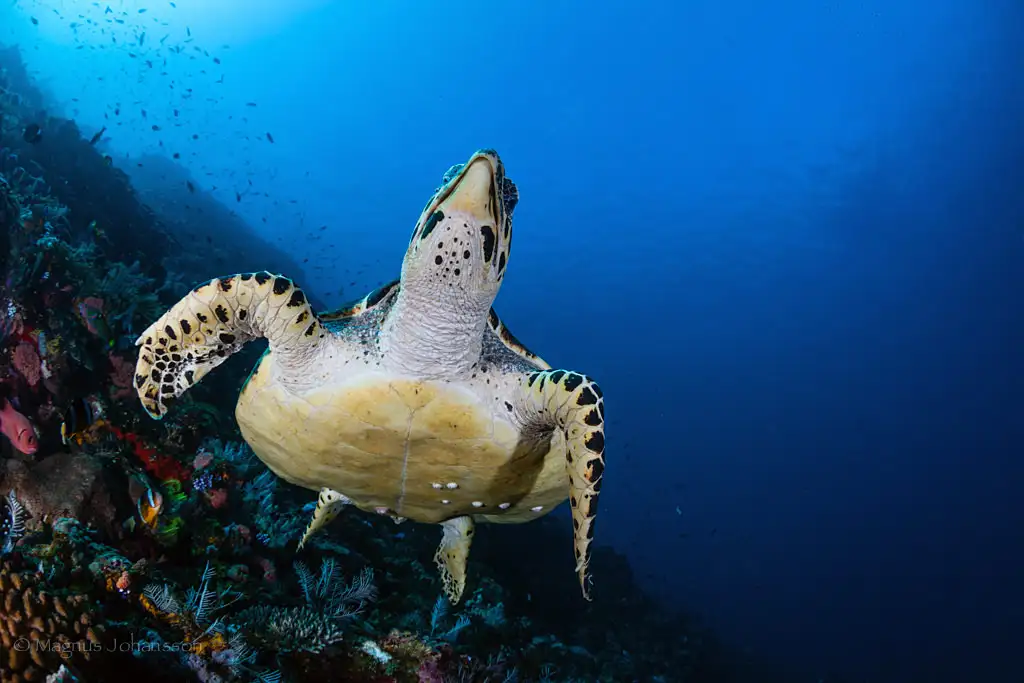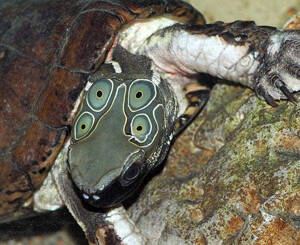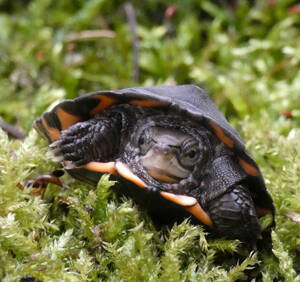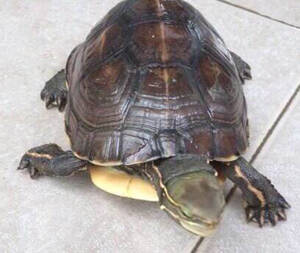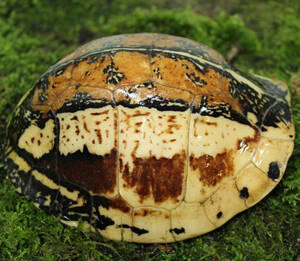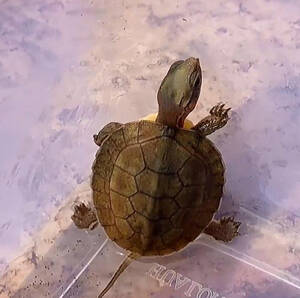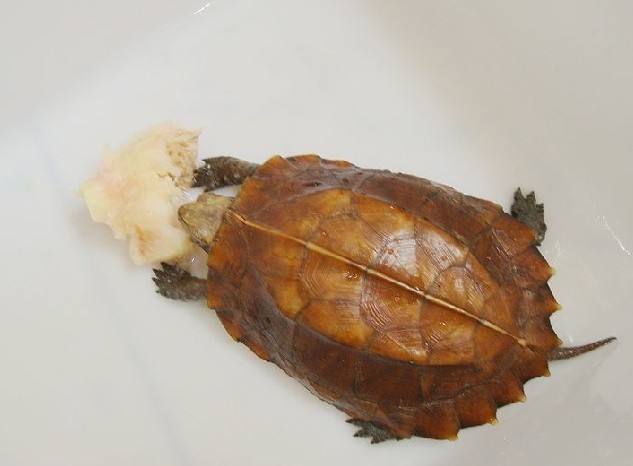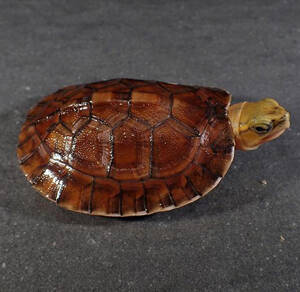Chelonia mydas
IUCN
LCBasic Information
Scientific classification
- name:Chelonia mydas
- Scientific Name:green sea turtle,Green turtle, blue turtle, stone turtle, tsio̍h-ku,ku-piah,ku-phi̍ah
- Outline:Testudines
- Family:Testudines Cryptodira Cheloniidae Cheloniinae Chelonia
Vital signs
- length:90-120cm
- Weight:100kg
- lifetime:80-100 years
Feature
One of the largest hard-shelled sea turtles.
Distribution and Habitat
Origin: Angola, Anguilla, Antigua and Barbuda, Australia, Bahrain, Bangladesh, Barbados, Belize, Brazil, British Indian Ocean Territory, China, Christmas Island, Cocos (Keeling) Islands, Colombia, Comoros, Cook Islands, Costa Rica, Cuba, Cyprus, Dominican Republic, Ecuador, Egypt, Equatorial Guinea (Bioko Island), Eritrea, Fiji, French Guiana, French Polynesia, Grenada, Guam, Guinea, Guinea-Bissau, Guyana, Haiti, India, Indonesia, Iran (Islamic Republic of), Jamaica, Japan, Kenya, Kiribati, Kuwait, Madagascar, Malaysia, Maldives, Marshall Islands, Martinique, Mauritania, Mayotte, Mexico Colombia, Micronesia, Mozambique, Myanmar, Netherlands Antilles, New Caledonia, New Zealand, Nicaragua, Niue, Northern Mariana Islands, Oman, Pakistan, Palau, Panama, Papua New Guinea, Peru, Philippines, Puerto Rico, Ascension, Saint Christopher and Nevis, Saint Lucia, Saint Vincent and the Grenadines, Sao Tome and Principe, Saudi Arabia, Senegal, Seychelles, Sierra Leone, Solomon Islands, Somalia, Sri
Appearance
The green turtle is one of the largest hard-shelled turtles. It is named for the green fat on its body. It has a huge body, 80-150 cm long and weighs 65-136 kg. The largest carapace can be up to 153 cm long and weigh 250 kg. It is covered with a flat round carapace, with only the head and limbs exposed outside the shell. The head is slightly triangular, with only a pair of dark brown scales on the forehead; when the head is retracted, it will get stuck, so it cannot be completely retracted into the shell. The cheeks are yellow and the neck is dark gray.
The snout is short and round, the front end of the upper jaw is not hooked, and the inner surface of its keratin has two vertical angular ridges; the lower jaw is slightly hooked upward, the jaw edge has strong serrations, and the chewing surface has a middle ridge connected by short sharp tooth processes. The back of the head has symmetrical large scales, and there is a pair of forehead scales. The carapace is heart-shaped, with scu
Details
Turtles are one of the oldest animals on Earth. These creatures have existed in the world for more than 200 million years, but their living environment is being threatened by the growing development of humans. Therefore, in 2000, the American Turtle Rescue Organization launched an international festival, World Turtle Day on May 23, to encourage people to love and rescue this ancient species in the world.
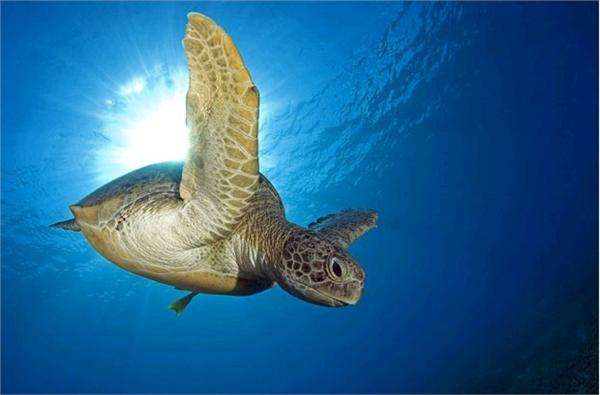
Turtles swallow seawater while eating, consuming a lot of salt. Some special glands next to the turtle's tear glands will excrete these salts, causing the turtle to "cry" on the shore.
When green turtles reproduce, their eggs will stay on the beach for nearly two months. If the temperature is too high during the third to fifth week, female turtles will hatch, and if it is too low, male turtles will hatch. Only between 28 and 30 degrees will a nest of twin turtles hatch.
The biggest impact on sea turtles is fishing, which is trawling. Large-scale trawling, with lead bars on the bottom of the net, not only catches all the high-value fish species that humans love to eat, but also shrimps and crabs living on the seabed and sea turtles migrating in the sea. The bycatch of fishing activities has already excessively wasted marine resources, and many creatures have died. Taiwan's green turtles are also threatened by this.
Adult green turtles have large bodies, hard back and plastrons, and fast swimming speeds. Therefore, apart from humans, they have almost no major natural enemies. Although there have been cases where adult turtles have lost a flipper or had bite marks on the end of their flippers, such attacks by sharks or other ferocious animals such as crocodiles are rare. However, the natural enemies of young green turtles are very many. On land, there are various beach animals, such as livestock, sand crabs, raccoons, red ants, snakes, birds of prey, etc., which will attack young turtles. In the sea, there are various carnivorous fish such as sharks and swordfish. Due to the lack of sufficient defense ability, the back shell of young turtles is not hard enough, and they do not run (swim) fast enough, so they can easily become delicacies of these natural enemies. The mortality rate of young green turtles in the first year is very high. Research data estimates that less than one thousandth of young green turtles can grow into adult turtles.
In terms of human disturbance, the destruction of nesting habitats includes harassing nesting mother turtles, improper digging of turtle eggs, catching baby turtles, improper construction and development, digging sand and gravel from the beach for other uses, and setting up lights on the shore. Harassment of nesting mother green turtles includes deliberate capture and unintentional visit interference, especially beach activities by uninformed tourists. Therefore, turtle ecological education and ecotourism are very important for the conservation of green turtles. Too much interference will prevent mother turtles from laying eggs and may abandon the nesting habitat forever; improper digging of turtle eggs and catching baby green turtles will directly reduce the number of newborn turtles. The above three factors will reduce the number of green turtle populations in nesting habitats.
Improper construction and development, digging sand and gravel from the beach for other uses will turn the beach into a gravel beach or even disappear. As a result, the mother turtles not only have nowhere to lay eggs, but also the baby turtles will die on the beach after they shed their shells because they cannot climb over the gravel. In addition, the strong light from the lighting on the shore, street lights and buildings near the beach will interfere with the baby turtles that rely on phototropism to find the ocean, and they will not be able to find the way to the sea. In the process, they will be killed by their natural enemies or left dead on the road.
In addition, marine pollution can also cause turtles to be infected with diseases, and residual fishing lines may also entangle the limbs or head and neck of the turtles, causing the turtles to lose limbs or even die. All of the above man-made destruction has seriously reduced the survival rate of the turtle population.
Listed in the 2004 Red List of Endangered Species of the World Conservation Union (IUCN) ver3.1-Endangered (EN).
Listed as a Class I protected animal in the Washington Convention.
Listed as a Class I protected animal in the China National Key Protected Wildlife List.
Protect wild animals and stop eating game.
Maintaining ecological balance is everyone's responsibility!

